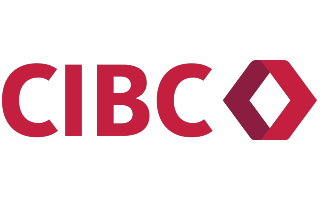There’s a lot you can do with $10,000 to invest. From stocks and ETFs to RRSPs and GICs, there are several potential investment options to explore. In this guide, we’ll show you how to invest $10k in 5 different ways, explore the pros and cons of each investment option, and look at how to find the best way to invest $10,000 based on your investment goals.
Summary: How to invest $10k depending on your risk tolerance
| Investment | Risk profile |
|---|---|
Stocks and ETFs | Medium to high |
Index funds | Medium |
Mutual funds | Medium |
Bonds | Low (but higher for some corporate bonds) |
GICs | Low |
How to invest $10k
The best way to invest $10,000 depends on a host of things: your age, goals, investment knowledge, and risk tolerance. You’ll need to have a clear picture of these before deciding on the best investment option.
For example, if you’re investing for your retirement, you may want to adopt a long-term approach with stocks and ETFs, and take advantage of the tax benefits of a Registered Retirement Savings Plan (RRSP).
But if you’re investing for a shorter period of time and need access to your funds in an emergency, something as simple as a high-interest savings account could be exactly what you need.
Let’s take a deeper look at the different suitable options for investing $10,000, and their pros and cons, below.
Should you invest $10k in a registered account?
Before you can choose any investments you need to consider whether or not you want to invest in a registered account. These accounts can be linked to other investment types, like stocks, ETFs and GICs, so it’s important to first decide if one of these accounts will suit you best before choosing the type of investment.
Registered accounts offer tax advantages and are designed to help you reach specific goals. Here are some popular options:
- Registered Retirement Savings Plan (RRSP). If you’re looking to save for retirement, you can get a jump start by opening an RRSP. Your RRSP contributions are tax-deductible, and you won’t be taxed on your investment income until you withdraw funds from your RRSP in retirement. You can also use your RRSP for a wide range of investments, including cash, GICs, stocks, ETFs, mutual funds and bonds.
- Registered Education Savings Plan (RESP). An RESP combines tax advantages and government contributions to help you cover the cost of your child’s post-secondary education. You can take advantage of benefits like the Canada Education Savings Grant (CESG), while there’s no tax on your investment income until your child withdraws funds to cover their education expenses.
- Tax-Free Savings Account (TFSA). You can use a TFSA to hold cash, ETFs, GICs, stocks, bonds and a mix of investments. The income you earn in a TFSA can then be withdrawn tax-free.
Pros and cons of investing in registered accounts
Pros
- Tax benefits. Registered accounts are specially set up to help you pay less tax
- Wide range of investments. You can use registered accounts to hold a wide mix of investments, from cash and bonds to stocks, ETFs and mutual funds.
- Easy access. It’s easy to open and manage a registered account through a huge range of financial institutions.
Cons
- Contribution limits apply. There are annual or lifetime limits to the amount you can contribute to a registered account.
- Terms and conditions. There may be tax implications to consider when you withdraw funds, such as if you make an early withdrawal from an RRSP.
- Not for all investments. Some investments, such as cryptocurrency and real estate, cannot be held in a registered account.
Invest $10k in stocks or ETFs
The next option is to use your $10,000 to build a diversified portfolio of stocks. You could focus on Canadian stocks if you wish, or broaden your horizons to invest in US companies and other international stocks.
Alternatively, you could invest in exchange-traded funds (ETFs). Units in ETFs can be bought and sold on stock exchanges just like individual stocks, and they provide access to a basket of securities. This makes it easier and more affordable to build a diversified portfolio.
The first step to investing $10k is to choose an online broker. Look for an online trading platform that has low fees and is easy to use, and that also provides access to all the markets you want to trade. Learn more about choosing a broker in our guide to the best stock trading apps in Canada, and don’t forget to look for the best brokerage signup bonuses.
You can then research the stocks or ETFs you want to invest in, and buy them via your broker’s online platform or mobile app.
Pros and cons of investing in stocks or ETFs
Pros
- Low fees. Discount brokerages offer low commissions when you buy and sell stocks, and some Canadian brokers now support commission-free stock trading.
- Potential for high returns. Investing in stocks provides the potential for higher returns than if you open a high-interest savings account or invest in GICs.
- Dividend income. By investing in stocks that regularly pay dividends to shareholders, you can generate ongoing passive income from your investments.
- Low minimum investment. With many Canadian brokers now supporting fractional shares, you can invest in stocks with as little as $1.
Cons
- Complicated for beginners. The stock market can be daunting for new investors, while advanced strategies like day trading are best left to experienced investors.
- Volatility. Stock markets are known for their volatility, and there’s no guarantee that your investments will rise in value.
- Other fees. Even if your broker offers commission-free trading, there may be other charges such as account maintenance fees or market data subscription fees.
Compare online trading platforms for investing $10k
Finder Score for stock trading platforms
To make comparing even easier we came up with the Finder Score. Trading costs, account fees and features across 10+ stock trading platforms and apps are all weighted and scaled to produce a score out of 10. The higher the score the better the platform - simple.
Invest $10k in index funds
Index funds are ETFs or mutual funds that track the performance of a market index, for example the TSX 60 or the S&P 500. They achieve this by investing in the stocks that make up the relevant index.
With an index fund, it’s easy to invest in a diversified portfolio of stocks across a range of market sectors. They also have low management fees and provide a set-and-forget option for investors.
Learn more in our guide to investing in index funds.
Pros and cons of investing in index funds
Pros
- Diversification. An index fund provides exposure to a diverse range of stocks and market sectors, helping to spread your risk.
- Save on brokerage fees. Investing in a single fund is a lot more cost-effective than paying brokerage fees to buy multiple stocks.
- Simple investment option. An index fund is a quick and easy way to gain broad exposure to a range of securities, so it’s often a good choice for new investors.
Cons
- Won’t beat the market. Index funds are designed to replicate the performance of the index, not to outperform the market.
- Hands-off approach. You might prefer to take more of a hands-on approach to managing your investments.
- Potential for losses. If the index falls, so will the value of your investment.
Invest $10k in mutual funds
A mutual fund is a professionally managed investment fund that pools together money from investors. Mutual funds invest in a basket of securities. They can be index funds that aim to track the performance of a specific index, or they can be actively managed with the aim of outperforming the market.
Unlike ETFs, mutual funds are traded at the end of each trading day. They also come with higher management fees than ETFs, but they’re an option worth considering if you’re searching for the best way to invest $10,000.
Pros and cons of investing in mutual funds
Pros
- Diversification. Mutual funds make it easy to gain exposure to a diversified portfolio of securities.
- Expert management. Investing in a mutual fund means letting a professional portfolio manager look after your investments.
- High liquidity. Funds are highly liquid, so it’s easy to buy and sell them when needed.
Cons
- Higher fees. You’ll usually pay higher management fees on a managed fund than on an ETF.
- Tax obligations. Mutual funds are typically not as tax efficient as ETFs.
- Higher minimum investment. Mutual funds have higher minimum investment amounts than ETFs.
Invest $10k in bonds
Bonds are loans made by investors to borrowers. Essentially, investing in a bond involves providing a loan to the government or to a company. That government or company then pays you interest on the loan, and returns the full principal amount when the bond reaches maturity.
Bonds are worth a look if you want to earn a steady income and preserve your capital. But they do have high investment minimums, so an alternative way to gain exposure to the bond market is to invest in bond ETFs or mutual funds.
Pros and cons of investing in bonds
Pros
- Little risk. Bonds are considered stable investments and carry less risk than other securities.
- Avoid volatility. Investing in bonds allows you to avoid the volatility associated with the stock market.
- Provide passive income. Bonds produce a steady, fixed income and offer higher returns than other safe investments like savings accounts.
Cons
- Risk varies. Government bonds are typically safer than corporate bonds, but you’ll want to check what letter grade any bond is assigned by the credit rating agencies.
- High investment minimums. Many bonds require at least a $5,000 investment, which may be a larger chunk of your $10k than you want to devote to bonds alone.
- Could lose value. Your bond could lose value if the issuing entity defaults or interest rates rise when you’re ready to sell.
Invest $10k in GICs
A guaranteed investment certificate (GIC) is an investment product that pays a guaranteed rate of interest on the money you deposit. In return, you agree to deposit your money for a fixed period, with GIC terms ranging anywhere from one month to 10 years.
If you’re looking for a safe investment option with minimal risk, GICs are a solid choice. And with $10,000 to invest, you could potentially use a GIC laddering strategy to help maximize your returns.
Pros and cons of investing in GICs
Pros
- Safe and secure. GICs provide a guaranteed return and are seen as a low-risk investment option.
- Competitive rates. You’ll generally get higher interest rates for GICs than you would for most savings accounts.
- CDIC protection. If you invest in a GIC offered by a CDIC member, you’re covered by up to $100,000 of CDIC insurance protection.
Cons
- Lower returns. GICs provide lower potential returns than other investments that come with a high level of risk, such as stocks.
- Funds are locked in. Most GICs require you to invest your money for a fixed period, so penalties will apply if you need early access to your money.
- Can’t match inflation. Long-term GICs may not be able to keep up with the pace of inflation.
Should you opt for self-directed investing vs robo-advisors?
The next question is whether you want to take a DIY approach to investing, or whether you want to let someone else choose investments on your behalf.
With self-directed investing, you have complete control over where your money goes. It’s easy to open a trading account with an online broker, and you can select the investments you want based on your investment goals and appetite for risk.
The downside is that choosing investments takes time and effort, and if you don’t know what you’re doing, there’s a risk of making the wrong choices.
Traditionally, the alternative to self-directed investment was to use a financial advisor. But rather than a real person, you can now let a robo-advisor choose your investments.
Robo-advisors are automated platforms that manage your investments based on your financial goals. You simply tell the platform your financial goals, time frame and risk tolerance, and it uses algorithms to create a balanced investment portfolio on your behalf.
This takes the hassle of managing a portfolio out of your hands, but you’ll also need to pay extra management fees. Learn more about how these platforms work in our guide to robo-advisors.
What to do before you invest $10k
Before you start searching for the best way to invest $10,000, consider these simple steps:
- Pay off high-interest debt. If you have any credit card debt or personal loans, pay these off first. They often have interest rates higher than what you’d earn in any investment vehicle, so you’ll come out ahead if you pay them down.
- Beef up your emergency fund. Keep 3-6 months’ worth of bare-bones expenses in a high-interest savings account where you can have instant access to it in an emergency.
- Create a vacation fund. If vacation or holiday expenses tend to creep up on you every year, consider setting aside part of your $10k to cover these expenses. Keep this money in a high-interest savings account the same as you would your emergency fund.
How to Invest $10,000 in 5 steps
When you’re ready to invest your $10k, here’s what you need to do.
Step 1: Set a goal
Start by setting clear financial goals. What do you want to do with your $10,000? Do you have a specific goal in mind, such as saving for a house deposit or investing for your retirement, or do you simply want to generate wealth for whatever the future holds? Think about how much money you want to make and in what time frame.
Step 2: Choose an investment
Compare the pros, cons and potential returns of different investment types to decide which is the right choice for you. Remember to keep your investing goals and your risk tolerance in mind at all times.
Step 3: Choose a broker or provider
Now it’s time to choose an online broker or investment provider. Compare fees, potential rates of return, and the ease of use of any trading platform before deciding if it’s right for you. You can use our table above to compare different investment platforms.
Step 4: Create an account
You’ll need to sign up for an account with your broker or financial institution of choice. You can do this by providing your personal information, contact details and proof of ID. If you’re signing up for a self-directed investing account, you might also need to provide information about the source of your funds and your prior investing experience.
Step 5: Invest your money
The final step is to pull the trigger on your investment. So place a buy order or deposit the necessary funds, then sit back and watch your $10k grow. Be sure to monitor your investment and reassess regularly to make sure it still aligns with your goals.
Bottom line
There are many different ways you could invest $10k. Whichever option you choose, your investments should align with your needs and financial goals. You may even decide that choosing a mix of the investments featured in this guide is the right approach for you. Make sure you understand the potential benefits as well as the risks involved before deciding on the best way to invest $10,000.
Frequently asked questions about investing $10k
More guides on Finder
-
How to invest in the EURO STOXX 50
Want to invest in the Euro Stoxx 50 in Canada? Explore investment platforms and popular Euro Stoxx 50 index funds.
-
How to buy Rheinmetall stock in Canada
Steps to owning and managing RHM, with 24-hour and historical pricing before you buy.
-
Best renewable energy stocks
These are the best renewable energy stocks to buy now in Canada.
-
A guide to futures trading in Canada
Learn the pros and cons of futures trading, how it works and how to start trading.
-
Best stocks to buy right now in Canada
Finder’s unique algorithm found the 20 best TSX stocks to buy right now.
-
Guide to online trading in Canada
Compare the best online trading platforms in Canada and learn how to buy stocks online.
-
How to invest in the S&P 500 in Canada
Find out how to invest in the S&P 500 in Canada—one of the world’s most popular stock indices—to diversify your portfolio.
-
How to buy Meta Platforms stock in Canada
Steps to owning and managing META, with 24-hour and historical pricing before you buy.
-
How to buy Amazon stock in Canada
Steps to owning and managing Amazon stock (AMZN), with 24-hour and historical pricing before you buy.
-
How to buy stocks in Canada
Want to know how to buy and sell stocks in Canada? Find out what you need to know in this simple, step-by-step guide.



